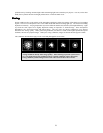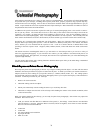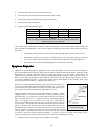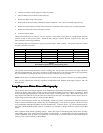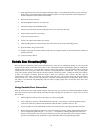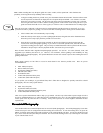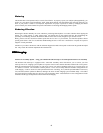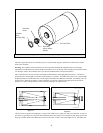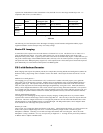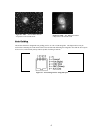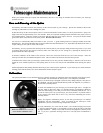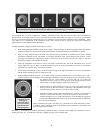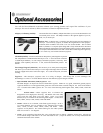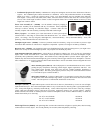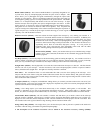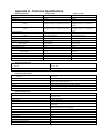
46
exposure time needed about 25 times shorter than at f/10, the field of view 5 times larger and the object size 1/5
compared to that of f/10. (see Table below)
Telescope
Model
Standard
Cassegrain f/10
With Reducer/Corrector
f/6.3
With Fastar Lens
Accessory f/2
NexStar 8 GPS
80" (2032mm) 50.4" (1280mm) 16" (406.4mm)
Focal
Length &
Speed
NexStar 11 GPS
110" (2800mm) 69.5" (1764mm) 23.1 (587mm)
NexStar 8 GPS
8 x 6.1 (arc min) 12.6 x 9.7 (arc min) 40 x 30 (arc min)
ST 237
F.O.V.*
NexStar 11 GPS
5.8 x 4.4 (arc min) 9.2 x 7.0 (arc min) 28 x 21 (arc min)
* Field of view calculated using SBIG ST 237 CCD camera with 4.7mm x 3.6mm chip.
The following is a brief description of the advantages of imaging at each f-number configuration and the proper
equipment needed to use the telescope in any of its many settings
F
F
a
a
s
s
t
t
a
a
r
r
F
F
/
/
2
2
I
I
m
m
a
a
g
g
i
i
n
n
g
g
As stated above, the exposure times are much shorter at f/2 than at f/6.3 or f/10. The field-of-view is wider, so it is
easier to find and center objects. Also with a wider field-of-view you can fit larger objects (such as M51, The
Whirlpool Galaxy) in the frame. Typical exposure times can be 20-30 seconds for many objects. Under dark skies you
can get an excellent image of the Dumbbell Nebula (M27) with only a few 30 second exposures (see figure 8-5 below).
The spiral arms of the Whirlpool galaxy (Figure 8-6) can be captured with a 30 second exposure and can be improved
upon dramatically if several 30-60 second exposures are added together .
F
F
/
/
6
6
.
.
3
3
w
w
i
i
t
t
h
h
R
R
e
e
d
d
u
u
c
c
e
e
r
r
/
/
C
C
o
o
r
r
r
r
e
e
c
c
t
t
o
o
r
r
When imaging some objects like planetary nebula (for example M57, the Ring Nebula) and small galaxies (M104, the
Sombrero Galaxy), larger image scale is needed to resolve finer detail. These objects are better shot at f/6.3 or even
f/10.
Medium size to small galaxies --
f/6.3 imaging gives you finer resolution then at f/2, but the slower f-number will usually require you to guide the
image while you are taking longer exposures. Guiding can be accomplished by using an optional Radial Guider or a
piggyback guide scope. The exposure times are about 10 times longer but the results can be worth the extra effort.
There are some objects that are small enough and bright enough that they work great at f/6.3. M104 (the Sombrero
Galaxy) can be imaged under dark skies with a series of short exposures using Track and Accumulate. Ten exposures
at 15 seconds each will yield a nice image and is short enough that you may not need to guide the exposure at all. For
f/6.3 imaging the optional Reducer/Corrector is needed. (See Optional Accessory section at the end of this manual).
Lunar or small planetary nebulae--
f/10 imaging is more challenging for long exposure, deep-sky imaging. Guiding needs to be very accurate and the
exposure times need to be much longer, about 25 times longer than f/2. There are only a select few objects that work
well at f/10. The moon images fine because it is so bright, but planets are still a bit small and should be shot at f/20.
The Ring nebula is a good candidate because it is small and bright. The Ring Nebula (M57) can be imaged in about
30-50 seconds at f/10. The longer the exposure the better.
Planetary or Lunar--
f/20 is a great way to image the planets and features on the moon. When imaging the planets, very short exposures are
needed. The exposure lengths range from .03 to .1 seconds on planetary images. Focus is critical as is good
atmospheric conditions. Generally you will take one image after another until one looks good. This is due to the
atmospheric “seeing” conditions. For every 10 exposures you might save 1. To image at f/20 you need to purchase a
2x Barlow and a T-adapter or Radial Guider.
Table 8-3



